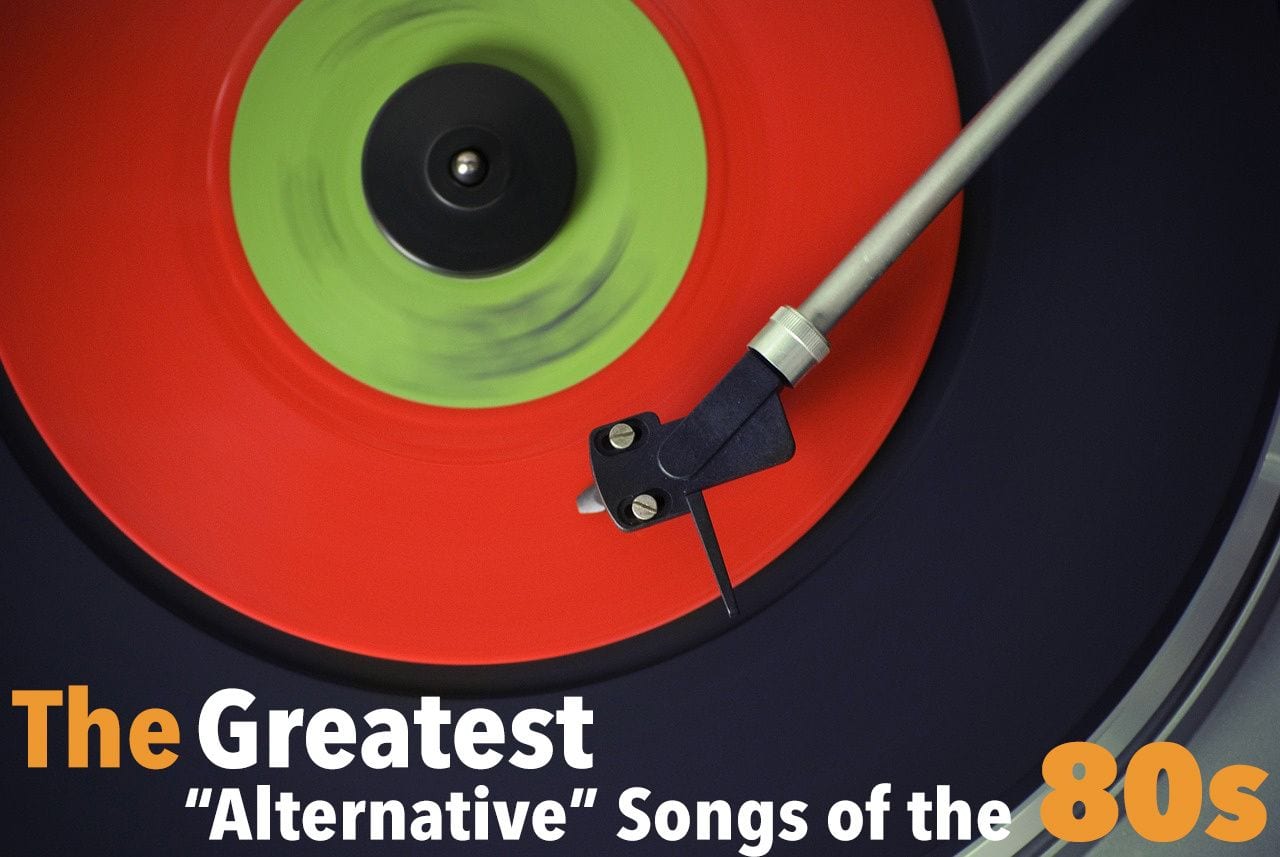Generally when people think of ’80s music, the first artists that pop into their heads might be Michael Jackson, Cyndi Lauper, Madonna, Prince, Duran Duran, a-ha and other staples of MTV and the Top 40. There’s no question that it was a golden age for pop music, although some of the quintessential hits of the ’80s have aged better than others. Many younger music fans in particular consider ’80s music irredeemably cheesy, and in many cases they are correct. But like all musical decades, there is another layer of music that by and large didn’t fit neatly into Top 40 playlists (at least in the US).
My first question: What is alternative? As it pertains to ’80s music, or any other decade for that matter, the answer is never really quite clear. “Outside the mainstream” isn’t really enough of a definition. After all, there are plenty of artists who reside outside the limited universe of Top 40 radio who wouldn’t be considered alternative: folk, metal, country, reggae, bluegrass, orchestral, jazz, blues, some hip-hop and others. “Alternative” requires a certain edge, a particularly adventurous vibe, a very specific sensibility. It’s hard to put your finger on it exactly, but you know it when you hear it.
The term “alternative” didn’t really become prominent until the very end of the ’80s, and into the early ’90s. Before that we had punk, post-punk, new wave, college rock, underground, modern rock, and other more specific labels like goth, industrial, new romantic, ska, power pop, hardcore, indie rock, etc. All of these fit within the umbrella of what would be considered alternative. Of course, it also depends on the artist, the album, the country, or even the listener. There are songs that hit the top of the singles chart in the UK or elsewhere in the world — the Boomtown Rats’ 1979 classic “I Don’t Like Mondays”, for example, the Jam’s “A Town Called Malice”, or David Bowie’s “Ashes to Ashes” — which had zero chance of ever becoming a mainstream hit in America.
Most would agree that Blondie’s earlier material, all of which was released in the ’70s, would fit into the alternative realm, but what about their string of chart-topping pop hits? They had four #1 singles in a three year span: “Heart of Glass”, “Call Me”, “Rapture” and “The Tide Is High”. Can an artist with that level of commercial pop success still be considered alternative? It seems much more feasible if its an artist that breaks through with one surprise hit — like Love and Rockets with “So Alive”, for example, or Suzanne Vega’s “Luka”. Sometimes it’s simply a judgment call. Many of these songs fit into multiple categories and many that were left out for not being alternative could very easily be considered by others to fit into that label quite nicely. There is necessarily and unavoidably a degree of subjectivity in not only selecting which songs to include and ranking them, but also determining which songs can be considered alternative in the first place.
The most important factor in compiling and ranking the list is artistic importance, with cultural significance also considered. Only one song per artist is selected, and only songs that were released during the ’80s are included. There are omissions that some might find surprising. The Ramones, for example, released almost all of their most important work in the ’70s, as did Wire and Television. Early MTV staples like “Pop Music”, “Cars” and “Video Killed the Radio Star” were all released in the ’70s. The Clash’s London Calling, one of the genre’s most important albums, came out in December 1979, just missing eligibility.
Likewise is Depeche Mode’s Violator, which hit stores in March 1990 (although the single “Personal Jesus” did come out in 1989, and was therefore eligible for consideration). Although the term “singles” is used in the title, it’s used lightly. As long as the song is a key album track or represents a major song in the artist’s repertoire, it need not have had a physical single release. There were nearly 400 songs on the initial list of potential candidates for inclusion, and narrowing that to 100 involved cuts that were heartbreaking. Many great songs are not included, but what we are left with is 100 of the best and most important songs of the decade covering a vast expanse of stylistic territory. At the very least, even if you pay no consideration to the rankings, it’s a great starting point for exploring some of the amazingly diverse and powerful music from the ’80s that still holds up today.
Editor’s Note: This list was researched and curated by Chris Gerard, and it is not a staff-wide list.
Part 1: 100 – 81
Part 2: 80 – 61
Part 3: 60 – 41
Part 4: 40 – 21
Part 5: 20 – 1
- The 100 Greatest Alternative Singles of the '80s: Part 2: 80 - 61 ...
- The 100 Greatest Alternative Singles of the '80s: Part 3: 60 - 41 ...
- The 100 Greatest Alternative Singles of the '80s: Part 4: 40 - 21 ...
- The 100 Greatest Alternative Singles of the '80s: Part 5: 20 - 1 ...
- The 10 Best Alternative Metal Songs of the 1990s - PopMatters
- 20 Music Videos of the '80s That Have Aged Well - PopMatters











